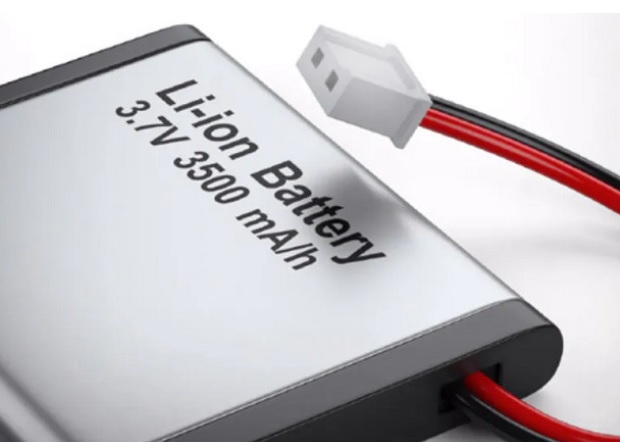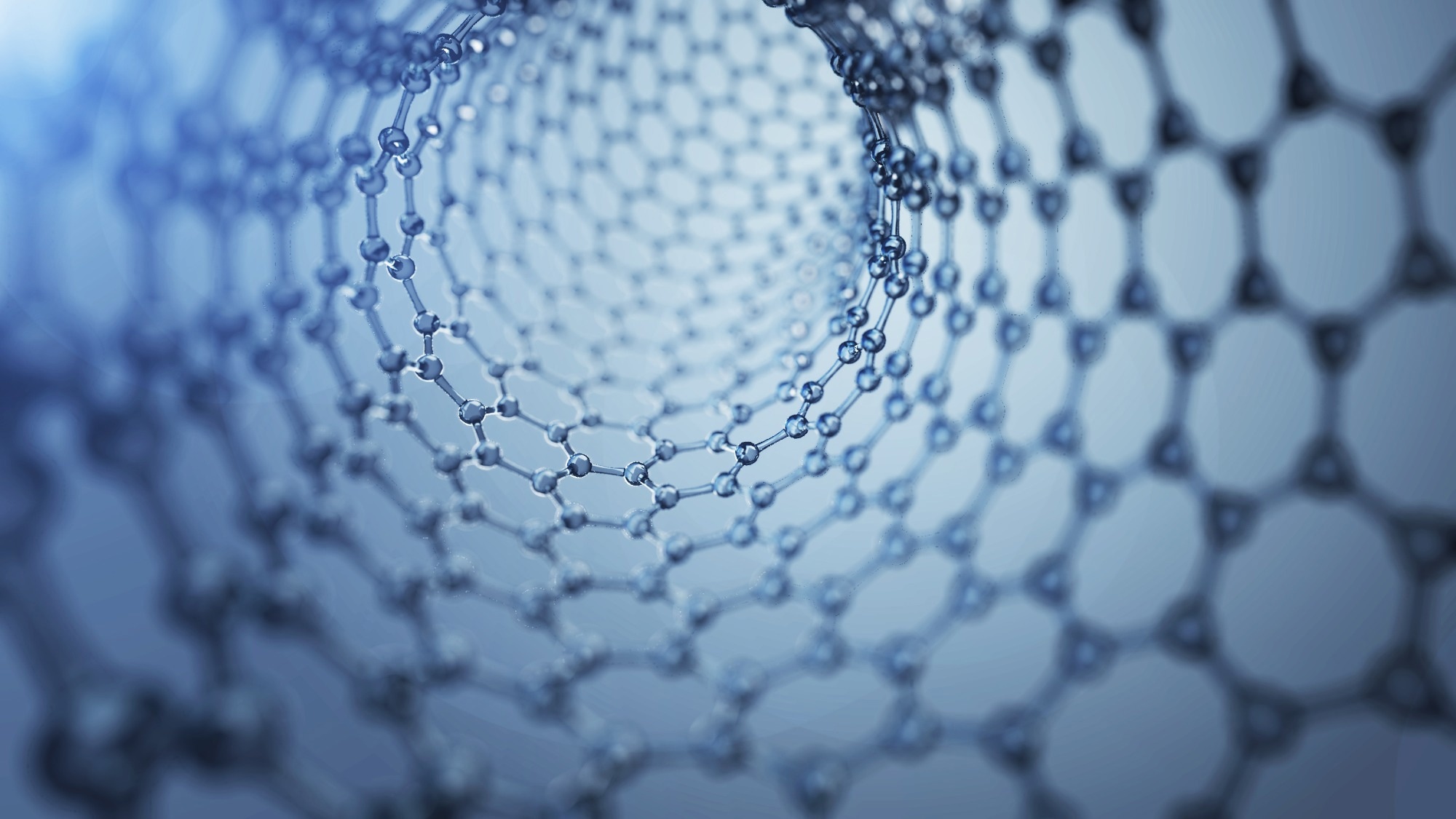2D Titanium Diboride Nanosheets as Anodes in Li-ion Batteries: Enhancing Energy Storage Performance
In the rapidly advancing world of electric vehicles (EVs), the quest for superior lithium-ion (Li-ion) batteries is of paramount importance. Extending battery life and achieving fast charging capabilities are crucial challenges in the development of these batteries. Recent studies have shown that two-dimensional (2D) nanomaterials hold great promise in enhancing the performance of Li-ion batteries. One such material, titanium diboride (TiB2) nanosheets, has garnered significant attention for its potential as an anode material in Li-ion batteries.
1. The Potential of 2D Nanosheets for Energy Storage
The emergence of 2D nanomaterials has opened up new possibilities for improving Li-ion battery technology. These thin, sheet-like structures with nanometer-scale thickness exhibit a high aspect ratio and a dense concentration of active sites, enabling fast charging and superior cycling performance. Researchers have particularly focused on 2D nanomaterials based on transition-metal diborides (TMDs) due to their unique properties. TMDs, such as titanium diboride, possess boron honeycomb planes and multivalent transition-metal atoms, which contribute to their high rate capability and long cycling stability for Li-ion storage.
2. Investigating Titanium Diboride Nanosheets
A collaborative research team comprising scientists from the Japan Advanced Institute of Science and Technology (JAIST) and the Indian Institute of Technology Gandhinagar (IITGN) conducted an experimental study on the storage potential of titanium diboride-based hierarchical nanosheets (THNS) as anodes in Li-ion batteries. Led by Prof. Noriyoshi Matsumi and Prof. Kabeer Jasuja, the team aimed to explore the efficacy of TMDs for energy storage.

3. Synthesis of Titanium Diboride Nanosheets
To develop the THNS, the researchers employed a synthesis method involving the oxidation of TiB2 powder using hydrogen peroxide, followed by centrifugation and freeze-drying of the resulting solution. This scalable synthesis method offers a significant advantage for the translation of nanomaterials into tangible technologies. It requires only simple stirring and does not necessitate sophisticated equipment, making it an accessible and practical approach.
4. Enhanced Li-ion Battery Performance with THNS
The experimental results demonstrated the remarkable potential of THNS as an anode material for Li-ion batteries. The researchers achieved a discharge capacity of approximately 380 mA h g–1 at a current rate of 0.025 A g1– during galvanostatic charge/discharge. Moreover, they obtained a discharge capacity of 174 mA h g–1 at a current rate of 1 A g1– (with a charge time of around 10 minutes), exhibiting a capacity retention of 89.7% after 1000 cycles. These findings indicate the high rate capability and cycling stability of THNS-based Li-ion battery anodes.
5. Ultrafast Charging and Long Cycle Life
Another notable feature of THNS-based anodes is their ability to sustain extremely high current rates, ranging from 15 to 20 A g1–, enabling ultrafast charging in just 9 to 14 seconds. Even at these high current rates, the anodes exhibited considerable discharge capacities of 50 to 60 mA h g–1, with a capacity retention of over 80% after 10,000 cycles. This exceptional performance further highlights the potential of THNS in overcoming the challenges associated with rapid charge-discharge technology and extended battery life.
6. Conclusion
In conclusion, the utilization of 2D titanium diboride nanosheets as anodes in Li-ion batteries presents a promising avenue for enhancing energy storage performance. The unique properties of these nanosheets, such as their boron honeycomb planes and multivalent transition-metal atoms, contribute to their high rate capability and long cycling stability. The experimental investigation conducted by the research team from JAIST and IITGN demonstrated the excellent performance of titanium diboride-based hierarchical nanosheets as anodes in Li-ion batteries. These nanosheets showcased high discharge capacities, remarkable capacity retention, and the ability to sustain ultrafast charging rates. The scalability of the synthesis method for THNS further adds to its potential for practical applications in the development of Li-ion batteries.
FAQs
Q1: What are the advantages of using 2D nanosheets as anodes in Li-ion batteries?
Using 2D nanosheets as anodes in Li-ion batteries offers several advantages. These nanosheets possess a high aspect ratio and a high density of active sites, enabling fast charging and superior cycling performance. They also exhibit high rate capability and long cycling stability, making them ideal for energy storage applications.
Q2: How were the titanium diboride nanosheets synthesized?
The titanium diboride nanosheets were synthesized through a scalable method. TiB2 powder was oxidized using hydrogen peroxide, followed by centrifugation and freeze-drying of the resulting solution. This synthesis method is simple and does not require sophisticated equipment, making it accessible for large-scale production.
Q3: What is the discharge capacity achieved with the titanium diboride nanosheets?
The experimental investigation demonstrated a discharge capacity of approximately 380 mA h g–1 at a current rate of 0.025 A g1– during galvanostatic charge/discharge. At a current rate of 1 A g1– (with a charge time of around 10 minutes), a discharge capacity of 174 mA h g–1 was achieved, with a capacity retention of 89.7% after 1000 cycles.
Q4: Can the titanium diboride nanosheets sustain high current rates?
Yes, the titanium diboride nanosheets exhibited the ability to sustain extremely high current rates, ranging from 15 to 20 A g1–. This enables ultrafast charging in just 9 to 14 seconds while maintaining a considerable discharge capacity of 50 to 60 mA h g–1, with a capacity retention of over 80% after 10,000 cycles.
Q5: What are the implications of this research for electric vehicles?
The research on 2D titanium diboride nanosheets as anodes in Li-ion batteries has significant implications for the electric vehicle industry. By enhancing energy storage performance and enabling ultrafast charging, these nanosheets can contribute to the development of more efficient and practical Li-ion batteries, thereby advancing the adoption of electric vehicles on a larger scale.
Reference
For more information, please refer to the original article: ACS Appl. Nano Mater. 2022, 5, 11.
As the electrical car (EV) business is advancing, so too are the efforts within the analysis and growth of superior lithium (Li)-ion batteries to energy them. Analyzing and increasing quick charge-discharge expertise and extended battery life are essential challenges of their growth.

Shutterstock.com/3d_illustrator
Some components, equivalent to options of the electrode-electrolyte interface, the diffusion of Li-ions, and electrode porosity, may also help surpass these issues to attain fast charging and prolonged lifespan.
In the previous couple of years, two-dimensional (2D) nanomaterials, skinny sheet-like buildings a number of nanometers thick, have risen as potential anode supplies for Li-ion batteries. These nanosheets have a excessive density of energetic websites and a excessive side ratio, which facilitates fast charging and wonderful biking efficiency.
Particularly, 2D nanomaterials established on transition-metal diborides (TMDs) have attracted scientific consideration. TMDs have a excessive charge and prolonged biking stability for Li-ion storage resulting from their honeycomb planes of boron and multivalent transition-metal atoms.
Presently, a group of researchers guided by professor Noriyoshi Matsumi from the Japan Superior Institute of Science and Know-how (JAIST) and professor Kabeer Jasuja from the Indian Institute of Know-how (IIT) Gandhinagar are working to additional examine the potential of TMDs for the storage of power.
The group carried out the primary experimental analysis on the storage feasibility of titanium diboride (TiB2)-based hierarchical nanosheets (THNS) as an anode materials for Li-ion batteries. The group included Rajashekar Badam, former Senior Lecturer at JAIST; Koichi Higashimine, Technical Specialist at JAIST; Akash Varma, former M.S. course pupil at JAIST; and Asha Liza James, Ph.D. Scholar at IIT Gandhinagar.
Particulars of their research have been reported within the journal ACS Utilized Nano Supplies and made accessible on-line on September 19th, 2022.
The THNS have been shaped by oxidizing TiB2 powder with hydrogen peroxide, adopted by centrifuging and freeze-drying the answer.
What makes our work stand out is the scalability of the strategy developed for synthesizing these TiB2 nanosheets. For any nanomaterial to translate right into a tangible expertise, scalability is the limiting issue. Our synthesis methodology solely requires stirring and no subtle gear. That is on account of the dissolution and recrystallization habits exhibited by TiB2, a serendipitous discovery that makes this work a promising bridge from lab to the sphere.
Professor Kabeer Jasuja, Examine Lead Creator, Indian Institute of Know-how (Gandhinagar)
Subsequently, the researchers constructed an anodic Li-ion half-cell using the THNS as energetic anode materials and examined the charge-storage options of the THNS-based anodes.
The researchers realized that the THNS-based anode exhibited a excessive discharge capability of 380 mAh/g with a present density of merely 0.025 A/g. Furthermore, they noticed {that a} discharge capability of 174 mAh/g could possibly be achieved for a excessive present density of 1 A/g, with a capability retention of 89.7% and a cost time of 10 minutes after 1,000 cycles.
Moreover, the THNS-based Li-ion anode might stand up to very excessive present charges, within the order of 15 to twenty A/g enabling ultrafast charging in roughly 9-14 seconds. Within the excessive present charge state of affairs, capability retention above 80% was witnessed after 10,000 cycles.
The research’s outcomes specify the appropriateness of the 2D TiB2 nanosheets as a candidate for rapid-charging and long-life Li-ion batteries. In addition they emphasize the good thing about nano-scaling bulk supplies, equivalent to TiB2, to attain favorable properties, together with excellent high-rate functionality, pseudocapacitive cost storage, and wonderful cyclability.
Such quick-charging expertise can speed up the diffusion of EVs and considerably lower ready instances for charging varied cellular digital units. We hope our findings can stimulate extra analysis on this area, which might finally result in the comfort of EV customers, lesser air air pollution in cities, and fewer disturbing cellular life with a purpose to improve the productiveness of our society.
Professor Noriyoshi Matsumi, Examine Lead Creator, Japan Superior Institute of Science and Know-how
The group anticipates that this extraordinary expertise would quickly be utilized in EVs and different digital devices.
Journal Reference
Varma, A., et al. (2022) Titanium Diboride-Primarily based Hierarchical Nanosheets as Anode Materials for Li-Ion Batteries. ACS Utilized Nano Supplies. doi.org/10.1021/acsanm.2c03054.
Supply: http://www.jaist.ac.jp/english/
